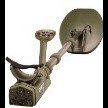Gold Bug 3.5" Round Search Coil
-
Similar Content
-
- 2 replies
- 337 views
-
- 18 replies
- 1,501 views
-
- 2 replies
- 3,647 views
-
- 8 replies
- 1,236 views
-
- 5 replies
- 1,296 views
-
- 2 replies
- 1,389 views
-
-






Recommended Posts
Create an account or sign in to comment
You need to be a member in order to leave a comment
Create an account
Sign up for a new account in our community. It's easy!
Register a new accountSign in
Already have an account? Sign in here.
Sign In Now